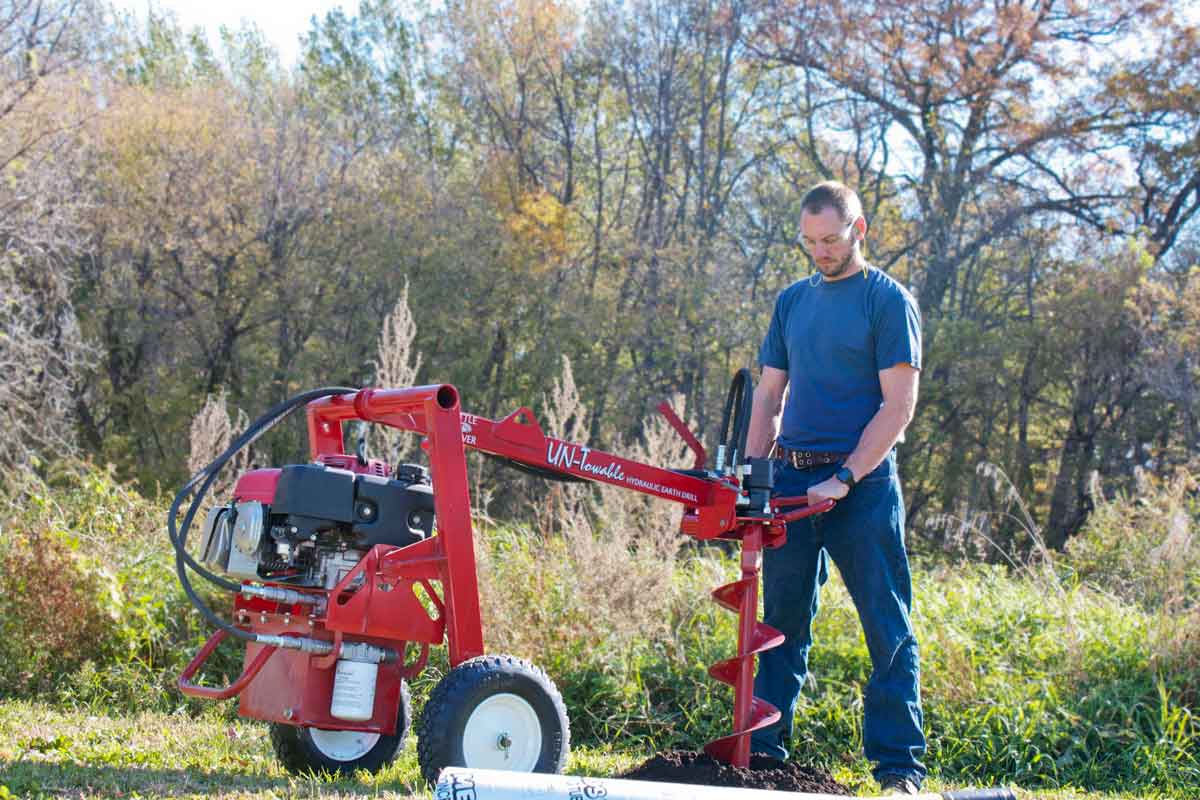From saws to grinders, hand tools designed for cutting
When you need to cut something on the job, what tool do you turn to? Do you select that tool because it is the right tool for the job or because it’s the tool that is right there? Selecting the right cutting tool depends on the type of work you do and the application being performed. There are a wide range of tools available to contractors that will cut through concrete, metal, asphalt and wood. Selecting the right one for the job will save you time and deliver better cutting results. Before determining the right tool for you, evaluate how much cutting you are doing and which option will deliver the all-day performance your work demands.
Cut-Off Saws
he cut-off saw is a well-known tool in the industry because it is widely used for concrete work. Cut-off saws range in size from 12 to 16 in. and are used to cut concrete, asphalt and metal. Power sources for cut-off saws include gas, electric, hydraulic and pneumatic. While all these options have their niche, gas cut-off saws are the most widely preferred.
“Cutting is usually just one step in the job being done by a construction crew, meaning that most crews aren’t spending all day cutting,” explains David Walker, business unit manager for diamond cutting, grinding and coring products at Hilti. “Gas cut-off saws provide plenty of power for cutting through tough material and provide the maximum amount of flexibility.”
Crews that cut concrete all day, every day, tend to prefer hydraulic, pneumatic or electric options. However, electric cut-off saws are seeing an increase in demand beyond cutting specialists because they run quieter and have better dust collection options than other saws.
“Every year, more contractors inquire about our electric cutters,” says Walker. “Dust control is a growing concern for contractors, and our electric cutter can be outfitted with dust containment vacuum systems. In addition, these saws are designed with counter-clockwise spinning blades to help propel dust into a vacuum.” Innovation like this makes electric cut-off saws the preferred choice for enclosed environments, along with dust-sensitive jobsites like residential landscaping and design builds.

Originally designed for grinding down and smoothing out metal welds, angle grinders also do a great job of cutting through a variety of materials including concrete, masonry, metal and stainless steel.
If you are in the market for a new cut-off saw, there are a few labor and performance-enhancing options to consider. Wheel kits make it easier to maneuver and follow a line when cutting. Also, selecting quality cutting discs makes a significant difference in productivity and the smoothness of a cut. Depending on what size saw you need, a quality gas cut-off saw ranges from $900 to $1,350, and manufacturers offer packages that include cutting discs, filters and other accessories. If you’re interested in purchasing an electric cut-off saw, you can expect to spend between $1,100 and $1,550 on a unit. Adding a dust collecting system will be an additional cost.
Angle Grinders
One of the most versatile tools in a contractor’s tool fleet is the angle grinder. Originally designed for grinding down and smoothing out metal welds, angle grinders also do a great job of cutting through a variety of materials including concrete, masonry, metal and stainless steel. Angle grinders come in a variety of blade sizes from 4 1/2 to 9 in. The most common sizes used on jobsites tend to be 4 1/2- and 5-in. models, because they are lighter and easier to maneuver than larger units. However, larger units are a better option when the operator is grinding a large surface area or needs to perform a deeper cut.
In addition to different sizes, angle grinders also come with different on/off options. The two most popular options included a paddle or “dead man” switch and a toggle switch. A paddle switch requires constant triggering by the operator. However, many experienced operators prefer a toggle switch because of comfort. Another modification to be aware of on the standard angle grinder is called a rat-tail grinder. This tool has a longer tapered body shape. The rat-tail is a popular model among metal fabricators because of the number of hours a day operators spend grinding. Most general contractors prefer the body design of a standard angle grinder because they are more comfortable for cutting work.
Advances in lithium-ion battery technology have ushered in a few cordless angle grinder options. Most of these battery-powered grinders are in the 4 1/2- to 5-in. size class and can handle cutting and grinding. “We introduced our first cordless grinder around three years ago,” says Aaron Brading, business unit manager for power tools and accessories at Hilti. “We have continued to make improvements to that unit and our 18-volt battery technology that powers it. For most contractors, this tool becomes a productive and cost-effective option because it eliminates the cord, which allows them to operate the grinder in a lot more application settings.”
In addition, these cordless models will tend to have a longer operating life than similar corded versions. “Many contractors treat angle grinders as disposable tools that will only last a few months before needing replacement,” adds Brading. “Some cordless grinder models come with a higher upfront expense but are also built with brushless motors that will hold up better under dusty working conditions.”
Quality corded angle grinders cost around $100 to $175, depending on the size of the unit. Cordless options can range from $330 to $600 with batteries.
Reciprocating Saws
Widely used in demolition applications because of the roughness of the cut, reciprocating saws provide contractors with a quick cutting option. Cordless saws are more popular with contractors, and there are 12-volt all the way up to 36-volt options on the market. The material you are cutting will help determine the size you need. Most contractors will purchase the same size as the rest of their cordless tools because manufacturers’ batteries are usually designed to be interchangeable with other tools. Many low-cost options for reciprocating saws are available in the market, but a quality one will deliver a better performance and last longer. A good cordless reciprocating saw ranges in price from $200 to $500, depending on the voltage.
Metal Circular Saws
Most people associate circular saws with cutting wood, but new metal cutting blades make them a great option for cutting metal. “Metal blades for the circular saw provide an outstanding quality of cut,” explains Brading. “Metal saw blades will cut through a variety of cold metals without sparking, making them a great solution for a wide-range of environments.” A good metal circular saw will cost around $560.
Additional Consideration
As you can see, there are a lot of different options to consider when you are trying to make the perfect cut. Whether your preference is corded or cordless tools, paying for quality will deliver a better return on your investment for the lifetime of your tools. Those tools generally perform faster, deliver a superior cut and carry a better warranty than low-cost options.
Tim Sparrow is the trade manager for Hilti North America.



Comments are closed here.